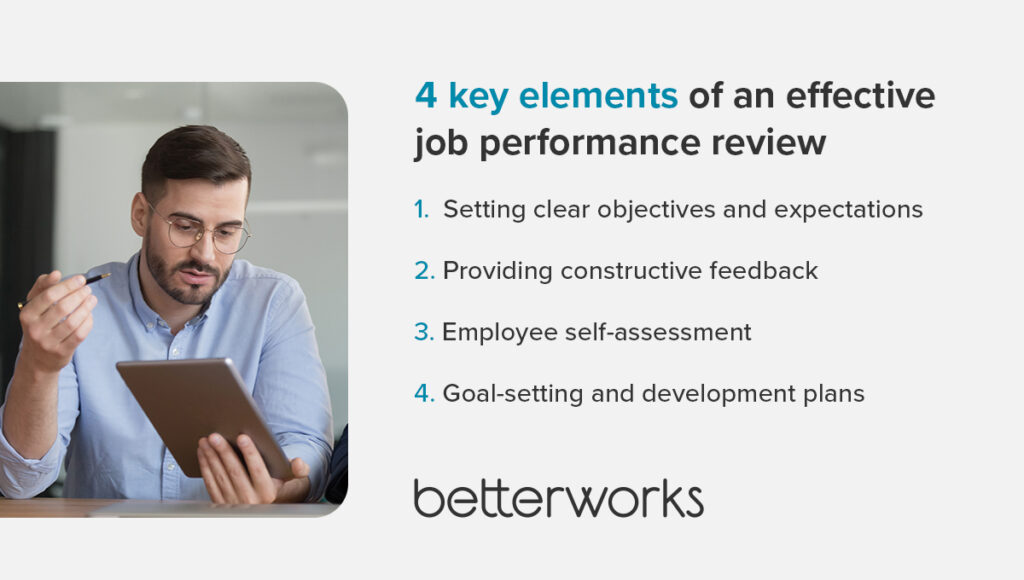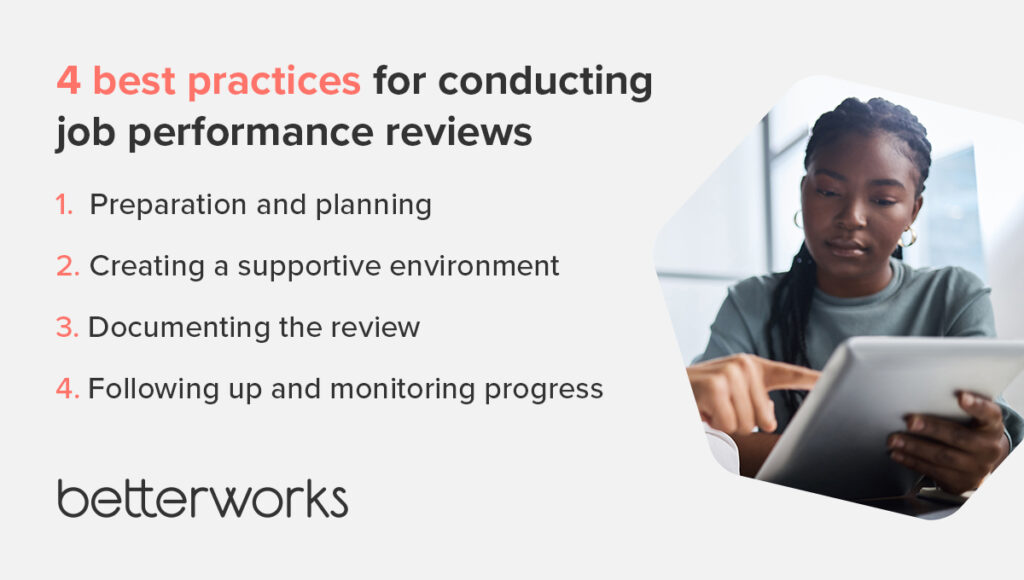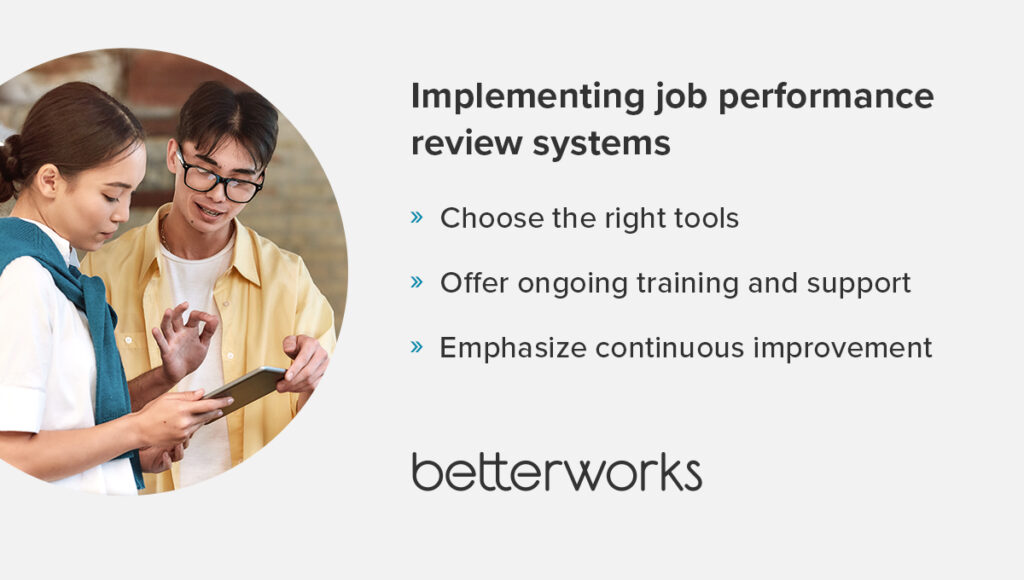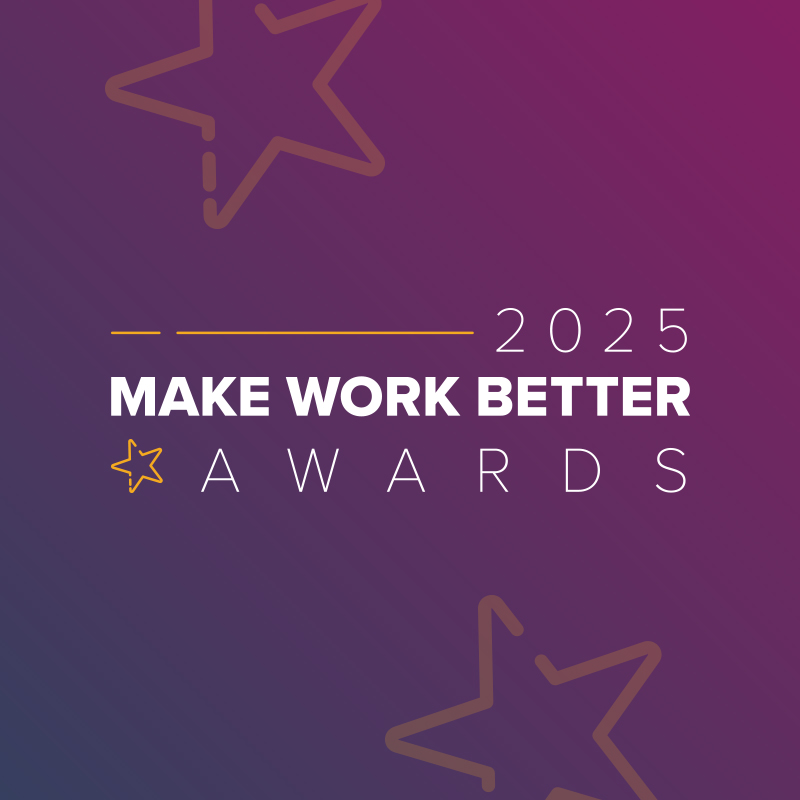Job performance reviews often get a bad rap, but they can be one of the most powerful tools for driving employee engagement and business success – if they’re handled well.
Unfortunately, that’s not always the case, at least from the employee perspective. Nearly half (44%) of employees feel their performance management systems are a failure, compared to just 12% of executives, according to our 2024 State of Performance Enablement report.
This disconnect between leaders and employees reflects a significant gap in how performance reviews are implemented versus how they’re experienced. While executives may believe their systems are functioning well, employees often feel unsupported, undervalued, or uncertain about their career growth.
When performance reviews fail to deliver meaningful guidance and recognition, they become a missed opportunity to boost employee morale, align individual and company goals, and foster professional development. However, when designed thoughtfully, job performance reviews can provide a clear path for improvement and growth.
Effective performance reviews require more than an annual check-in — they demand a structured, ongoing process that includes regular feedback, clear goal setting, and a focus on development. By rethinking how they’re conducted, you can transform job performance reviews into a powerful tool for engagement, growth, and long-term success.
Learn how Betterworks can help you conduct effective job performance reviews.
4 key elements of an effective job performance review
Conducting an employee job performance review requires more than just sitting down for an annual meeting. It involves careful preparation, constructive feedback, and a clear plan for employee development. Discover four elements that make a job performance review great.
Setting clear objectives and expectations
Before diving into the review process, you need to set clear goals and expectations. What goals should the employee be working toward? Clear goals help guide employees and ensure that the performance review will provide meaningful feedback. Be sure to align these expectations with overall organizational goals.
Providing constructive feedback
Feedback is the foundation of any job performance evaluation. But for it to be effective, it needs to be constructive. Rather than focusing solely on mistakes or shortcomings, aim to provide a balance between positive feedback and constructive criticism. Your goal is to serve as a coach who can motivate employees while guiding them toward better performance.
Employee self-assessment
One of the most empowering steps in the employee performance review process is the inclusion of a self-assessment. Giving employees the opportunity to reflect on their own performance encourages accountability and self-awareness. It also provides insight into how employees perceive their own strengths and areas for improvement.
Goal-setting and development plans
No performance review is complete without discussing the future. After evaluating the employee’s current performance, work together to set goals and create a development plan that aligns with their career aspirations and your organization’s needs. Effective goal setting helps employees stay motivated and focused on professional growth.

3 examples of job performance reviews
While every organization may approach performance reviews differently, there are common scenarios that all managers and HR leaders are likely to encounter. Below are a few job performance review examples that can help guide your process.
Positive performance review example
In a positive performance review, an employee who has consistently met or exceeded expectations and made significant contributions to the team would receive feedback such as: “You’ve been an incredible asset to the team this past year. Your ability to juggle multiple projects while maintaining high-quality work is impressive. Moving forward, I’d like to see you take on a more active leadership role in mentoring new team members.”
This type of feedback not only recognizes the employee’s achievements but also sets the stage for future growth by encouraging leadership development.
Improvement needed review example
For an employee who’s shown potential but needs improvement in specific areas, such as meeting deadlines, the review might sound like: “You’ve demonstrated strong skills in your tasks, but there’s room for improvement when it comes to meeting deadlines. Let’s work together on creating a time-management plan that can help you stay on track.”
This feedback balances strengths and weaknesses. It recognizes the employee’s strengths while giving helpful advice on how to fix performance problems. It emphasizes working together and supporting each other in improving.
Addressing specific issues review example
When addressing specific issues, such as interpersonal conflicts or poor communication, a manager might say: “There’s been some tension in the team recently, and I’d like to discuss how we can resolve it. Your technical skills are excellent, but improving communication with your peers will help you and the team succeed. Let’s outline some steps we can take to ensure a more collaborative working environment.”
This kind of feedback praises the employee’s skills while directly dealing with the problems at hand. It also offers a plan to fix the problem and help improve team performance.
4 best practices for conducting job performance reviews
A great job performance review doesn’t happen by chance. It takes preparation, clear communication, and consistent follow-up. When done well, these reviews can help both employees and the organization grow and succeed.
Here are some simple and effective practices to help you improve your performance appraisal process.
Preparation and planning
Good preparation is key to creating a smooth performance review process. You can set managers up for success by making sure they have all the tools they need to gather the right information. This means reviewing the employee’s past goals, getting feedback from team members or other departments, and including self-assessments to let employees reflect on their work. When managers have a full picture of the employee’s performance, they can give more meaningful feedback.
Make it easy for managers to find specific examples of what an employee has done well and where they need to improve. Clear examples make feedback more useful and actionable. The review process should also guide managers to focus on both professional growth and areas for improvement, so it’s not just about looking back but also planning for the future. Provide resources, such as the following checklist, to help managers follow a standardized and effective process.
Checklist for managers:
- Review the employee’s goals and past reviews. Start by looking over the employee’s previous performance reviews and any goals they set in the past. This will help you understand how they’ve progressed and whether they’ve met their goals.
- Get feedback from colleagues if needed. If the employee works with other team members or departments, gather feedback from those colleagues to get a fuller picture of the employee’s performance. This can provide useful insights that you may not see firsthand, improving your overall employee appraisal process.
- Prepare examples of strengths and areas for improvement. Provide specific examples of the employee’s accomplishments and areas for improvement. Having these concrete examples will make your feedback clearer and more actionable.
- Plan questions or points to discuss their professional growth. Think of a few questions or topics to talk about regarding the employee’s career development. This can help guide the conversation toward setting goals for the future and identifying opportunities for growth.
- Think about ways to help the employee improve. Consider practical steps the employee can take to improve their performance. Whether it’s additional training, resources, or mentorship, offering specific solutions shows your commitment to their development.
When you build these steps into the process, you help managers have more productive and helpful conversations with their teams.
Creating a supportive environment
An effective performance review process should feel supportive, not intimidating. It should encourage managers to start reviews by recognizing the employee’s achievements and positive contributions. Starting with something positive sets the right tone and helps employees feel appreciated.
The process should guide managers to ask employees for their thoughts on their performance, any challenges they’ve faced, and where they want to improve. Include reminders for managers to actively listen, like summarizing key points or asking questions to show they value the employee’s input. When employees feel heard, the conversation becomes more of a two-way discussion instead of just feedback from the top. This makes the review more collaborative and useful.
Documenting the review
A simple but important part of the review process is documentation. Make sure the process includes steps for managers to write down the main points of the review, like feedback, new goals, and any plans for improvement. This documentation serves as a reference point for both the manager and the employee, which helps them grow.
“To say, here’s where I started from, here’s how I can document my own growth, how I’ve evolved, and where I want to go to and really use that as a development plan for growth can only help improve performance,” says Caitlin Collins, organizational psychologist and program strategy director at Betterworks.
Clear documentation also helps keep things fair and consistent across the company. It lets managers track progress over time and creates accountability. By including a simple way to record each review, you help make sure everyone stays on the page.
Following up and monitoring progress
Following up after the review is just as important as the review itself. The process should prompt managers to check in regularly with employees to see how they’re doing with their goals and offer support. These follow-ups aren’t just about tracking performance — they’re a chance to tackle challenges, celebrate wins, and adjust goals as needed.
By making follow-up a regular part of the review, you shift performance reviews from a one-time event to an ongoing process. Regular check-ins optimize the performance review cycle and keep the focus on continuous improvement and long-term growth. It keeps everyone on the same track and committed to growth.
“Make sure that leaders are having conversations with managers, and managers are having the right conversations with their direct reports,” Caitlin says. “That is a really good way to reinforce coaching conversations.”
When these steps are part of the process, performance reviews become a helpful tool for driving success across the company.

Implementing job performance review systems
Creating a robust job performance review system requires more than just setting up meetings between managers and employees. It’s about building a well-thought-out process that involves the right tools, proper training, and a focus on continuous improvement. A performance review system that’s designed and implemented effectively can lead to stronger employee development, better alignment with business goals, and a more engaged workforce.
Here’s how to set your performance review system up for success.
Choose the right tools
Selecting the right performance management tools is the foundation of an efficient performance review system. The tools you choose should simplify the process, making it easier for managers and employees to stay on track with goals, feedback, and progress. Modern tools like Betterworks offer real-time feedback, goal tracking, and intuitive dashboards, which help streamline the review process and keep everyone aligned throughout the year.
Look for tools that have regular feedback features so managers and employees can talk about their performance every day, instead of waiting for year-end reviews. Real-time feedback helps managers address performance issues and achievements as they happen, keeping employees engaged and providing them with timely guidance. This prevents surprises during formal reviews and promotes a culture of continuous improvement.
Offer ongoing training and support
Even the best tools won’t make an impact if people don’t know how to use them effectively. That’s why training is critical when implementing a performance review system. Both managers and employees need to understand how the system works, what’s expected of them, and how to get the most out of the review process.
Start by offering thorough training on using performance management tools, but go beyond that. Provide workshops or role-playing exercises to help managers feel more confident in delivering constructive feedback and guiding conversations with their teams. Employees should also be trained on how to do self-assessments and how to actively participate in their own performance reviews.
Consider offering ongoing resources, such as written guides or online tutorials, so that both managers and employees have access to support when they need it. This ensures everyone is well-prepared and able to contribute to a meaningful and productive review process.
Emphasize continuous improvement
A performance review system isn’t something you set up once and forget about. View it as an evolving process that adapts to the needs of your organization and workforce. After each review cycle, gather feedback from both managers and employees. Ask them what worked, what didn’t, and how the process could be improved.
Use that feedback to adjust and update the system. Maybe managers need more training on giving difficult feedback, or the tool needs more customization options. By continuously refining the process, you help ensure that your performance review system stays effective, relevant, and aligned with employee development and business goals.
Make continuous improvement a regular part of your review process by checking in with managers and employees throughout the year. This not only keeps the system running smoothly but also shows your commitment to making the performance review process a valuable tool for everyone involved.

Enhancing job performance reviews for business success
Job performance reviews are a critical tool for fostering employee development and driving business success. By using best practices like setting goals, giving helpful feedback, and following up often, you can make your review process more than just a formality. It can be a powerful tool for improving performance and engaging employees. Stay focused on helping employees grow and aligning goals with organizational success, and you’ll see meaningful results across your team and company.
Better reviews start with better manager-employee relationships







